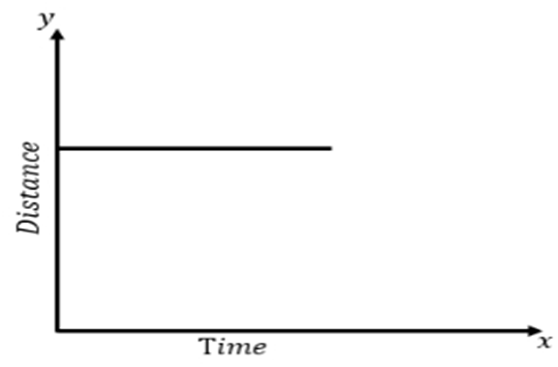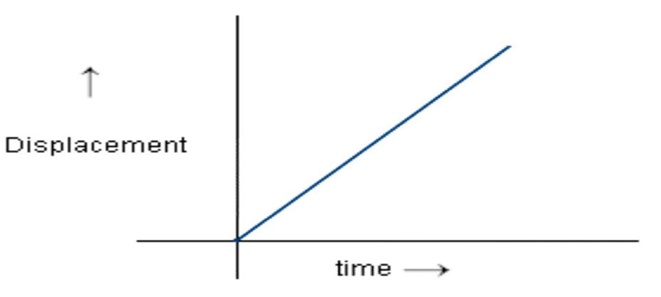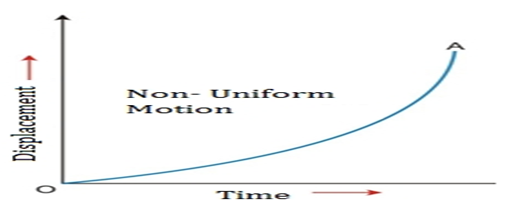- Books Name
- Science Made Easy Science Book
- Publication
- Science Made Easy
- Course
- CBSE Class 9
- Subject
- Science
Uniform Acceleration - If the change in velocity in equal intervals of time is always the same, then the object is said to be moving with uniform acceleration.
Example: a body falling from a height towards the surface of the earth.
Non-uniform or Variable Acceleration- If the change in velocity in equal intervals of time is not the same, then the object is said to be moving with variable acceleration.
Example - A ball thrown vertically upwards is moving with a negative acceleration as the velocity decreases with time.
Graphs for Motion -
1) Distance-time graphs (s-t graphs)
a) When the object is stationary or at rest -
The distance time graph for stationary object is the line parallel to time axis.

b) When object is in uniform motion -
The distance time graph for the object moving in uniform motion is the straight line inclined to time axis

C) When object is in non-uniform motion -
The distance time graph for object moving in non -uniform motion is the curved line.

Important results of distance time graphs -
1) area under curve of s-t graph = displacement/distance travelled by the object
2) slope of s-t graph = velocity of the object

 Science Made Easy
Science Made Easy
